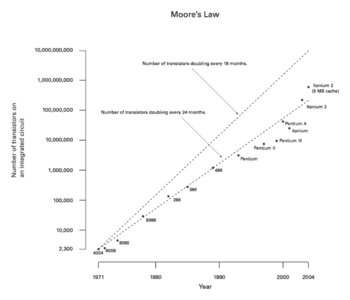Intel Architecture/TechnologyBenefits: (all information acquired)
Intel® Core™ microarchitectureIntel® Core™ microarchitecture: Higher performance, greater energy efficiency, and more responsive multitasking for enhanced user experiences in all environments.
Intel® Quad-Core technologyIntel® Quad-Core processors deliver four complete execution cores within a single processor, delivering unprecedented performance and responsiveness in multithreaded and multitasking business and home use environments.
Intel® 65nm technologyAdditional transistors deliver advanced capabilities—from dual- and multi-cores and improved cache, to innovative technologies such as virtualization and security.
45nm Hi-k metal gate technologyWith more than 400 million transistors for dual-core processors and more than 800 million for quad-core, the 45nm family introduces new microarchitecture features for greater performance and new levels of energy efficiency.
Intel® next generation architecture—"Nehalem"Nehalem is a truly dynamic and design-scalable microarchitecture that will deliver both performance on demand and optimal price/performance/energy efficiency for each platform.
Intel® 64 architectureIntel 64 architecture improves performance by allowing systems to address more than 4 GB of both virtual and physical memory.
New instruction set innovation—SSE4Streaming SIMD Extensions 4 (SSE4) is Intel's largest ISA extension in terms of scope and impact since SSE2 and offers dozens of new innovative instructions.
Technology
Intel® Virtualization TechnologyIntel Virtualization Technology enables client and server virtualization solutions with the ability to take advantage of integrated processor functions to help deliver more efficient solution stacks and improved solution performance.
Intel® Active Management Technology (Intel® AMT)Intel AMT provides built-in manageability that dramatically improves IT efficiency by making it easier to discover, heal and protect network platforms across your enterprise.
First delivered in 2005
Hyper-Threading TechnologyHyper-Threading Technology provides thread-level parallelism on each processor, resulting in more efficient use of processor resources, higher processing throughput, and improved performance on today's multithreaded software.
First delivered in 2002
Intel® QuickAssist TechnologyUnder the banner of the Intel QuickAssist Technology, Intel is providing strategic support for accelerators through several major initiatives.
PCI Express* TechnologyPCI Express technology provides a scalable serial I/O attach point across client, communications and server platforms.
First delivered in 2005Generation 2 enabled systems expected.
Geneseo technologyGeneseo technology has been proposed by IBM and Intel to further enhance PCI Express technology specifically for emerging requirements of accelerators.
AMD Architecture/Technology AMD Architecture, LC is a woman owned firm specializing in
environmentally sustainable architecture. Founded in 1997 by
Angela Dean, AIA, the goal of AMD is to design spaces that meet aesthetic, functional and budgetary needs that enrich spiritual and physical well-being. We believe that good design is both
healthy for the occupants as well as for the environment.
In February 1982, AMD signed a contract with
Intel, becoming a licensed second-source manufacturer of
8086 and
8088 processors.
IBM wanted to use the Intel 8088 in its
IBM PC, but IBM's policy at the time was to require at least two sources for its chips. AMD later produced the
Am286 under the same arrangement, but Intel canceled the agreement in 1986 and refused to convey technical details of the
i386 part.
AMD challenged Intel's decision to cancel the agreement and won in arbitration, but Intel disputed this decision. A long legal dispute followed, ending in 1994 when the
Supreme Court of California sided with AMD. Subsequent legal disputes centered on whether AMD had legal rights to use derivatives of Intel's
microcode. In the face of uncertainty, AMD was forced to develop "
clean room" versions of Intel code.
In 1991, AMD released the
Am386, its clone of the Intel 386 processor. It took less than a year for the company to sell a million units. Later, the
Am486 was used by a number of large
OEMs, including
Compaq, and proved popular. Another Am486-based product, the
Am5x86, continued AMD's success as a low-price alternative. However, as product cycles shortened in the PC industry, the process of reverse engineering Intel's products became an ever less viable strategy for AMD.














 is a percentage of the instructions that can be improved (or slowed),
is a percentage of the instructions that can be improved (or slowed), is the speed-up multiplier (where 1 is no speed-up and no slowing),
is the speed-up multiplier (where 1 is no speed-up and no slowing), represents a label for each different percentage and speed-up, and
represents a label for each different percentage and speed-up, and is the number of different speed-up/slow-downs resulting from the system change.
is the number of different speed-up/slow-downs resulting from the system change.


